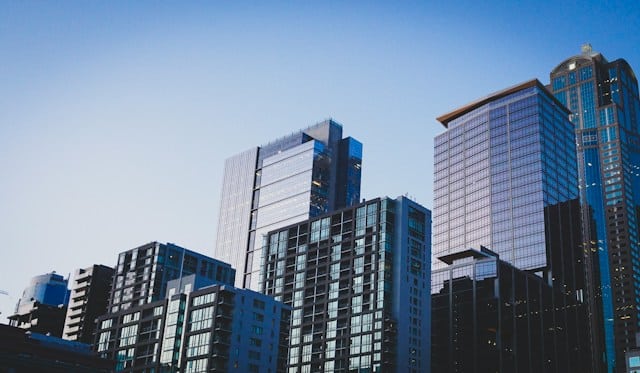In the face of changing climate conditions, water-efficient real estate development in arid regions has gained significant attention in recent years. As water shortages become an increasingly prominent issue, it is vital for developers to adapt their strategies to ensure sustainability and conservation. This will not only ensure the long-term viability of their projects, but also contribute to the broader efforts towards environmental preservation.
Sustainable Water Management in Real Estate Development
The core of water-efficient real estate development lies in the adoption of sustainable water management practices. This involves everything from the planning stages, construction, to the operation of the property. It requires a comprehensive analysis of the local water resources, climate conditions, and the expected water demands of the property.
A lire en complément : How to ensure compliance with international standards in cross-border real estate projects?
Water management strategies typically involve a mix of water conservation measures, efficient irrigation systems, and the use of reclaimed water. Water conservation can be achieved through the installation of water-efficient fixtures and appliances, rainwater harvesting systems, and the use of drought-resistant landscaping.
Efficient irrigation systems are particularly important in arid areas, where agriculture is a major water consumer. The use of modern drip irrigation systems, for instance, can drastically reduce water usage compared to traditional methods.
Sujet a lire : What are the challenges and opportunities of developing real estate near airports?
Reclaimed water, or treated wastewater, offers a valuable resource that has been underutilized in many areas. Its use for non-potable applications such as irrigation and toilet flushing can significantly reduce the demand on freshwater resources.
Mitigating the Effects of Drought and Land Degradation
Drought and land degradation are two major challenges faced in arid regions. These factors can greatly affect the availability of water resources and the sustainability of real estate development.
One effective strategy to mitigate the effects of drought is to incorporate climate-resilient design elements in the development. This could include designing buildings and landscapes to reduce heat absorption, thus reducing the need for irrigation.
Land degradation, on the other hand, can be managed through proper land use planning. This involves assessing the environmental vulnerability of the land and adjusting development plans accordingly. For instance, developers could avoid building on steep slopes, which are prone to erosion, and instead focus on flatter areas that are less vulnerable.
International Standards and Guidelines
In an increasingly globalized world, it is essential to comply with international standards and guidelines for sustainable real estate development. These standards provide a framework for developers to ensure their projects are environmentally friendly and sustainable.
For instance, the International Organization for Standardization (ISO) provides guidelines on sustainable development in buildings and civil engineering works. These cover a wide range of issues, including water management, energy efficiency, and waste management.
Moreover, there are also specific guidelines available for sustainable water management in real estate development. The Water Efficiency in Buildings Network (WEBnet), for example, provides a comprehensive set of guidelines for water-efficient design and management in buildings.
Strategic Planning for Sustainable Development
Strategic planning is key for sustainable water-efficient real estate development. This involves considering the wider implications of the development, beyond just the immediate site. For instance, developers need to consider how their project will impact local water resources, and how it will fit into the broader water management strategy of the area.
One useful tool for this is a water footprint assessment. This involves calculating the total volume of freshwater used to produce goods and services, considering both direct and indirect water use. A water footprint can provide valuable insights into how a development will impact local water resources, and can guide developers towards more sustainable practices.
In addition, strategic planning should also consider the social and economic aspects of the development. For instance, developers should aim to create employment opportunities for the local community and contribute to the local economy.
Innovative Water Technologies
The use of innovative water technologies can greatly enhance the water efficiency of real estate developments. These could include advanced water treatment systems, smart irrigation systems, and water-efficient appliances.
Advanced water treatment systems, such as membrane bioreactors, can effectively treat wastewater for reuse. This not only reduces the demand for freshwater but also minimizes the release of pollutants into the environment.
Smart irrigation systems, on the other hand, can optimize water usage by adjusting the amount of water delivered based on factors such as soil moisture levels and weather conditions. This ensures that plants receive just the right amount of water, minimizing wastage.
Water-efficient appliances, such as low-flow showerheads and dual-flush toilets, can significantly reduce indoor water usage. These appliances are an easy and cost-effective way to conserve water, and are becoming increasingly popular in modern developments.
Green Building: Incorporating Water Efficiency in Construction
Incorporating water efficiency in green building designs is a trending concept in water-efficient real estate development. This concept goes beyond simply installing water-efficient fixtures and involves a holistic approach to saving water from the initial stages of construction to the operation of the building.
The use of porous materials in construction can help foster soil water retention, reducing water runoff and encouraging natural irrigation. Additionally, water-efficient practices during the construction phase, such as controlling dust with reclaimed water and minimizing the use of potable water for construction activities, can contribute significantly towards reducing water consumption.
In arid regions, where the water supply is often scarce, incorporating features such as green roofs and walls can help in managing heat and promoting evaporation. This not only aids in cooling the building naturally but also contributes to the local water cycle, thus improving local climate conditions.
Furthermore, the use of efficient plumbing systems that minimize water leaks, water-efficient fixtures, and appliances, and the implementation of advanced technologies for wastewater reuse within the building, are crucial factors in developing a green, water-efficient building.
Ensuring a building is water-efficient is not only about saving water but also about being sensitive to the local water resources and climate conditions. It involves considering the impact of the building on the local water demand and water sources, and on the broader water management strategy of the area.
Conclusion: The Future of Water-Efficient Real Estate Development
The future of real estate development, especially in semi-arid and arid regions, is undoubtedly leaning towards sustainable development. This includes water-efficient practices that not only conserve water but also integrate seamlessly with the local environment and contribute positively to the local community.
As documented in the international journal of sustainable real estate development, these practices are not just about new technologies and standards. They are also about changing mindsets and habits, about seeing water not as an unlimited resource, but as a precious commodity that needs to be managed and conserved responsibly.
In facing the challenges of climate change and water scarcity, developers must utilize sustainable management practices, innovative water technologies, and strategic planning to ensure water efficiency. They also need to comply with the international standards and guidelines to ensure their projects are in line with global efforts towards environmental preservation.
Above all, the successful implementation of water-efficient real estate development relies on a cooperative effort by all stakeholders. It calls for governments to provide supportive policies and incentives, for developers to adopt sustainable practices, and for the consumers to support and demand such developments.
In conclusion, water-efficient real estate development is not just a trend but a necessity in the face of growing water scarcity. By adopting the best practices discussed in this article, developers in arid regions can contribute significantly towards ensuring a sustainable future for all.













